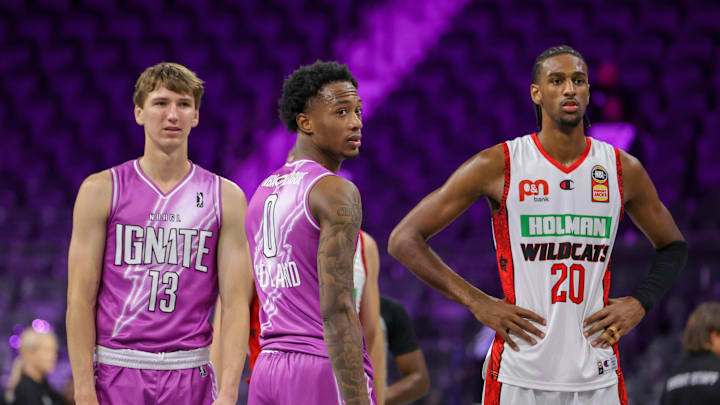The NBA's recent announcement that they were shuttering the G-League Ignite was mostly met with understanding or indifference. The Ignite was started back in 2020 as a path for top prospects to earn both valuable experience and a big salary in preparation for them eventually being drafted. While they do have several notable alumni, such as Jalen Green and Scoot Henderson, the Ignite hasn't quite worked out the way that it was initially intended to.
Perhaps the model was flawed from the start since it was meant to feature several top prospects at the same time. That fundamentally made it an AAU team with several projected first-round picks working to up their stats to improve their draft position. Compared to the rest of the G-League, there is actually very little development or even a coherent style of play.
What happens now to the top prospects that would have played with the G-League Ignite?
Part of the reason the NBA decided to end the Ignite was due to college athletes now being able to make money off of their names and likenesses (NIL). That means when the likes of elite high school prospect Cooper Flagg go to college, he can make millions in endorsements. Unlike before, when the NCAA made arbitrary rules to keep athletes broke.
To their credit, the NCAA offers players like Flagg a much bigger stage to play on, with more fans going to college games than G-League games while also getting more fans to tune in. Had players such as Scoot Henderson played a season of college basketball, he probably would have been even more hyped than he was coming out. There is also still the National Basketball League route, with players like LaMelo Ball playing a season in Australia before joining the NBA.
That would give certain top prospects another route to the league but all this seems unnecessary. Players are forced to arbitrarily spend a year out of high school before being picked, instead of just being drafted out of high school. Were they to reinstate prep-to-pro's, teams could take full advantage of the G-League as a farm system, especially with each of the NBA's 30 teams now having its own G-League franchise.
Relying on outside forces to develop players is risky and may produce mixed results. Not every college program is created equally and some may not develop players as well as others or have them play roles that they may not ultimately play in the NBA. Compare that to the G-League farm system, with teams working with their parent franchises to develop prospects to maximize their potential.
Overall, the NBA's decision to pull the plug on the G-League Ignite was the right call. There are better alternatives now that will develop top prospects while also paying them but there would be no need for alternatives if the NBA changed its rules to allow 18-year-olds to join the league.
